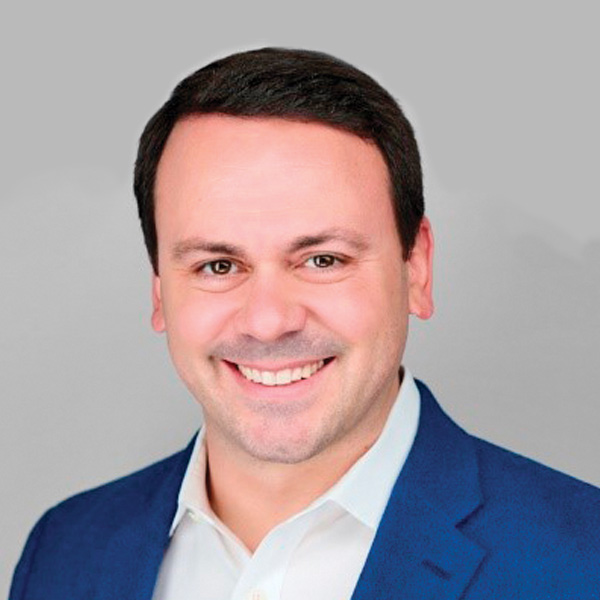Earlier this year, an 80-year-old man came out of retirement to work as a high school janitor after his landlord raised his rent by $400 a month. In response, students posted a TikTok video of the former retiree cleaning the halls and set up a GoFundMe account. They raised $270,000 and the custodian, known as Mr. James, was able to retire again while the students’ goodwill garnered national headlines.
“Even though tapping a portion of home equity with a reverse mortgage could provide a significant increase in retirement resources for many seniors, the anticipated gold rush to claim this wealth so far remains a trickle.”
Was Mr. James’ situation a blip — a heartwarming story to end a national newscast — or the new reality for an increasing number of seniors? This past February, 89% of seniors (ages 60-75) who participated in a national survey from AAG said they believed the U.S. was experiencing a retirement savings crisis. Roughly half of the more than 1,500 survey respondents said these circumstances were affecting them personally.
43% rated the condition of their retirement savings as fair or poor.
44% felt they had not saved enough to retire comfortably.
57% said they are either somewhat optimistic or not optimistic that their level of savings will cover the duration of their retirement.
Almost 60% were cutting back on nonessentials to save money.
You don’t have to look far for signs of why the survey participants answered the way they did. Last year, annualized inflation peaked at 9.1%, significantly affecting the purchasing power of many retirees. Investments in the equity and bond markets didn’t provide them with any relief either. The S&P 500 shrank by 19.4% in 2022 while long-term U.S. government bonds lost 39.2%, their worst year on record.
Troubling future
Longer-range retirement projections appear equally disturbing. Today, the percentage of private-sector workers whose only retirement account is a defined benefit pension plan is 4%, down from 60% in the early 1980s. Its replacement, the 401(k), which is designed to move the burden of managing retirement uncertainty to individual employees, hasn’t fully lived up to its promise.
In 2022, the average balance in a 401(k) plan dropped by 20.5%, reducing the typical employee nest egg to $103,900, according to Fidelity Investments. In 2021, U.S. labor statistics showed that 68% of private industry workers had access to an employer-provided retirement plan, but only 51% chose to participate.
“Where could retirees’ additional financial relief come from, so they won’t have to worry about outliving their money? One potential source is home equity.”
Meanwhile, America’s two massive social insurance backstops, Social Security and Medicare, could be insolvent in roughly a decade. The Medicare Hospital Insurance Trust Fund may not be able to cover 100% of its costs by 2029. Social Security could run out of excess reserves by 2034. If the federal government is forced to reduce benefits, more seniors will likely have to dig deeper into their own pockets to cover their retirement expenses.
To their credit, millions of resilient seniors have begun cutting back on nonessential expenses like dining out and leisure travel to stretch their retirement budgets. But these measures, as well intentioned as they might be, are like sticking a Band-Aid on a deep cut that requires stitches. Bigger thinking and solutions will be required to stop the bleeding.
So, where could retirees’ additional financial relief come from, so they won’t have to worry about outliving their money? One potential source is home equity. Homeowners who are 62 and older now have a record $11.8 trillion in equity, or roughly three times the current $3.68 trillion savings deficit.
That’s a lot of money — and it’s good news. The even better news is that homeownership among Americans seniors is widespread. About 80% of people 65 and older own a home today, with an average equity pool of about $300,000. Mortgage originators can help their clients use this equity to live their lives fully in their retirement years, especially if originators are familiar with reverse mortgage products.
Potential lifeline
If you’re a lender or broker working in the forward mortgage space, you’ve likely helped clients refinance for a dozen different reasons. They might have been taking advantage of lower interest rates, moving to more stable monthly mortgage payments, or pulling cash out to help pay for a child’s braces, summer camp or college education. Refinancing was a win-win for you and your clients.
As many of these clients have grown older, their financial focus may have shifted from providing for their family to securing their own retirement, where traditional solutions like cash-out refinances and home equity lines of credit may no longer address their financial needs. After paying off or substantially paying down a mortgage, the last thing they likely want is to commit to another cycle of monthly mortgage payments that extend 15, 20 or 30 years. They’re looking to boost cash flow, not deplete it.
This is where inclusion of a reverse mortgage as part of a comprehensive financial plan may make the most sense. With a reverse mortgage, homeowners can tap some of their home equity while they continue living there, without ever making another monthly mortgage payment. This is possible because a reverse mortgage first pays off the current mortgage, if one exists, then pays out in cash any qualifying equity that remains. Homeowners are still responsible for covering maintenance expenses, property taxes and homeowners insurance, and for complying with all loan terms.
A Home Equity Conversion Mortgage (HECM) is a type of reverse mortgage insured by the Federal Housing Administration (FHA). It’s also a nonrecourse loan, which means that if the loan balance were to exceed the value of the home, neither the borrower nor their heirs are required to pay the difference.
Lingering misperceptions
Even though tapping a portion of home equity with a reverse mortgage could provide a significant increase in retirement resources for many seniors, the anticipated gold rush to claim this wealth so far remains a trickle. Today, fewer than 2% of retirees have taken advantage of what is typically their largest cash asset.
Admittedly, when reverse mortgages were introduced more than 60 years ago, they didn’t get off to a great start. Nonborrowing spouses faced foreclosure if they didn’t pay off the mortgage or sell the home after their spouse moved out or died. Other reverse mortgage borrowers, suddenly flush with cash, found themselves going through most or all of their proceeds in the first year, leaving few funds for the ongoing payment of property taxes and homeowners insurance.
Like a manufacturer announcing a product recall, the industry corrected these program flaws with spousal protections, first-year draw limits, counseling, financial assessments and other consumer safeguards. Despite these and other improvements, the industry still hasn’t fully reclaimed the telling of its own story.
One battle underway is tied to the public perception that reverse mortgages are expensive. But for anyone who has paid insurance premiums, real estate commissions, investment commissions and other expenses for financial services, this claim that is often leveled by competing industries or companies is a red herring. Mortgage insurance premiums add to the cost of an FHA-backed reverse mortgage as they do for a traditional forward mortgage, but in addition to guaranteeing that the borrower will never owe more than the home’s appraised value, they guarantee continued payments to the borrower in the event the lender goes bankrupt.
●●●
America is not getting any younger. More than 56 million adults ages 65 and older live in the U.S. and account for about 17% of the nation’s population, according to census figures. By 2030, when the last of the baby boomers age into retirement, it is projected that there will be more than 73.1 million of these older adults.
If you truly plan on serving even a fraction of these clients for life, then it only makes sense to provide them with a complete array of tools and possibilities for their retirement independence. This should include not just a GoFundMe account but a reverse mortgage too. ●
Author
-

Christopher Moschner is chief marketing officer at Finance of America. Moschner has spent his 20-plus-year career delivering winning marketing strategies. By leveraging his technical background, he has focused on simplifying complex product concepts to better demonstrate customer value and drive sales growth. He previously worked for insurance and annuity companies Protective Life and Brighthouse Financial. Before that, Moschner worked as a brand manager for Procter & Gamble. Reach Moschner at (866) 948-0003. The views expressed in this article are those of the author alone and do not necessarily reflect the views and opinions of his employer. This article does not provide tax or financial planning advice. Please consult the applicable professional for such advice.
View all posts






